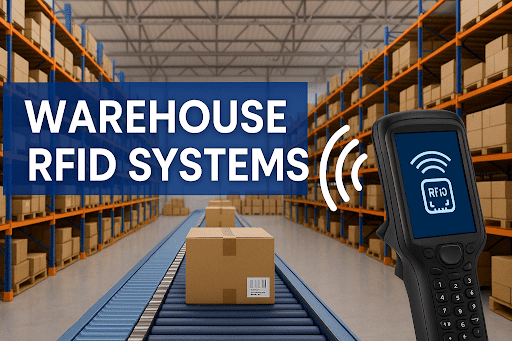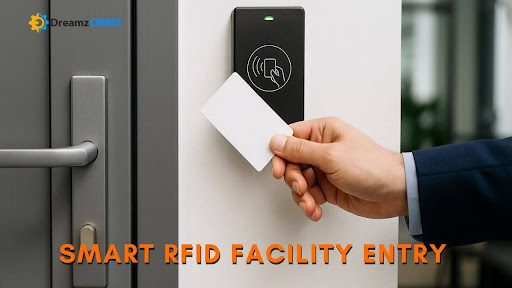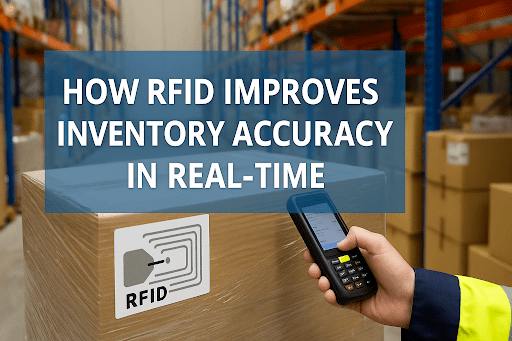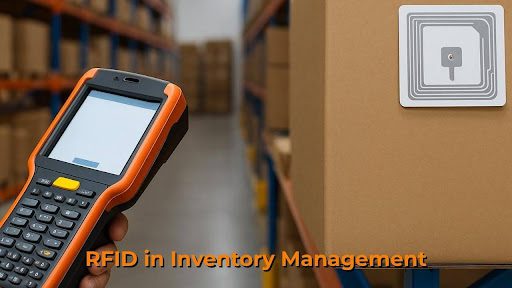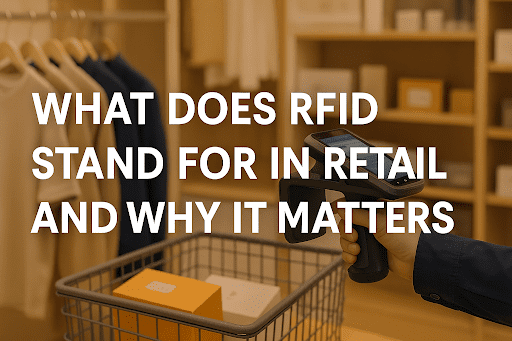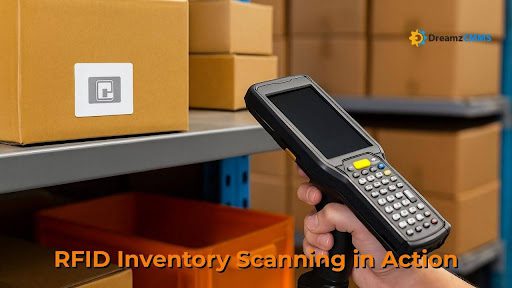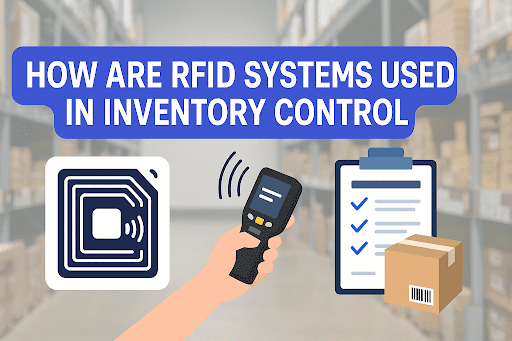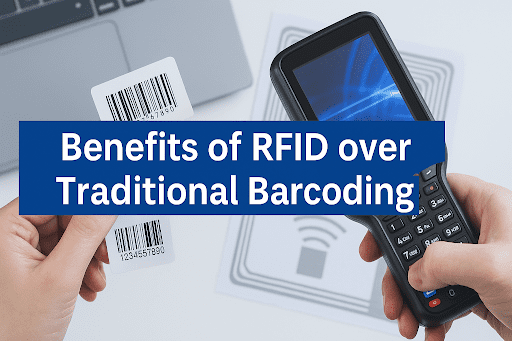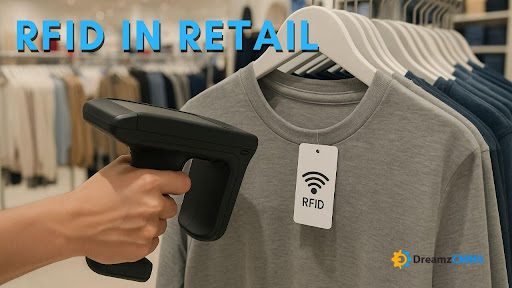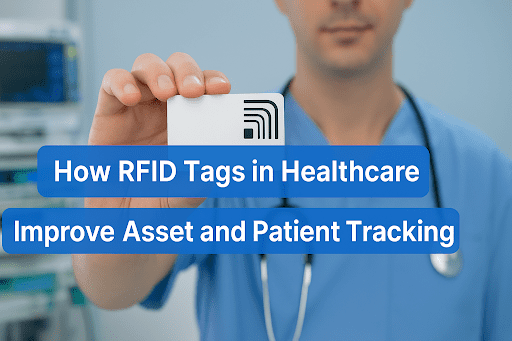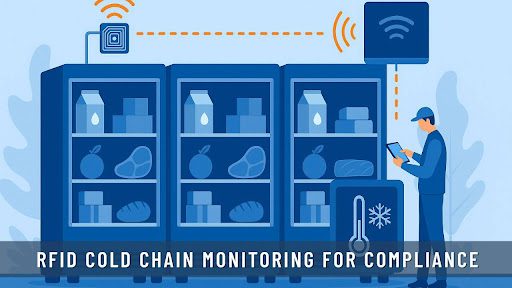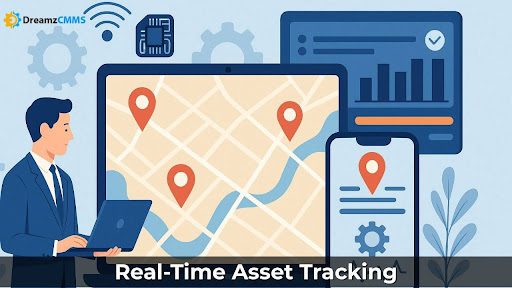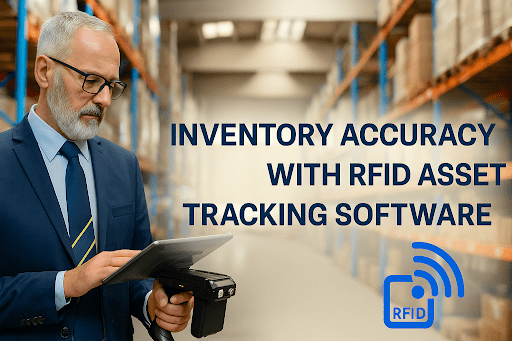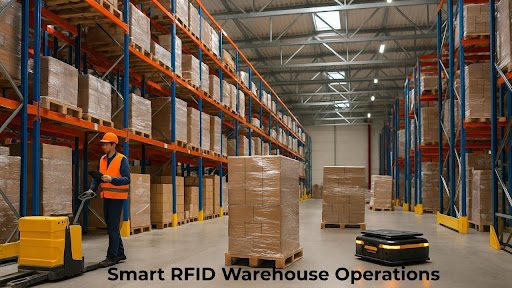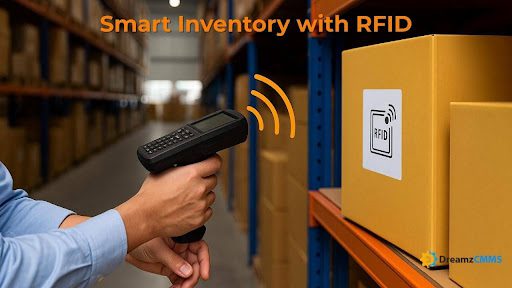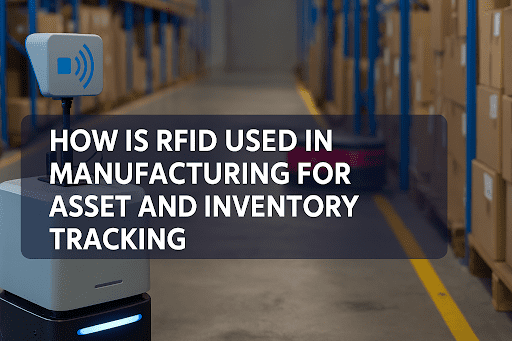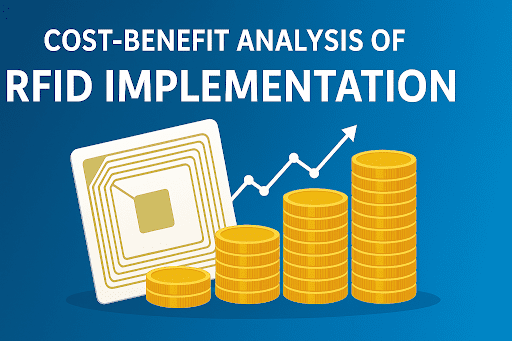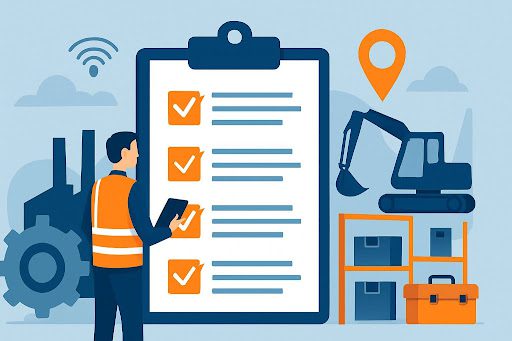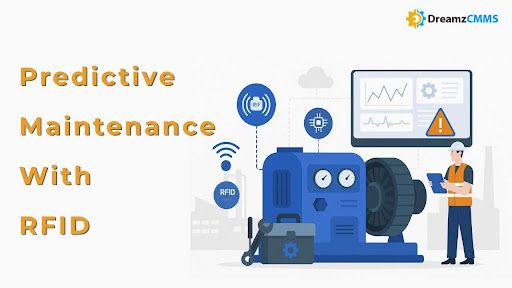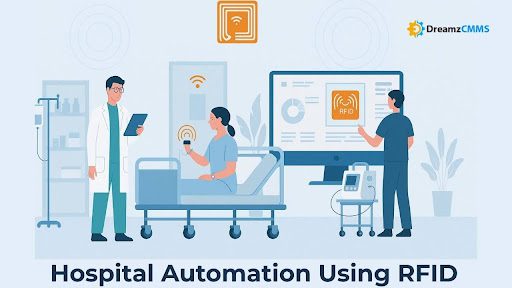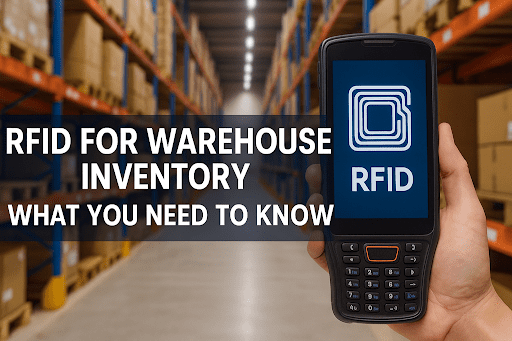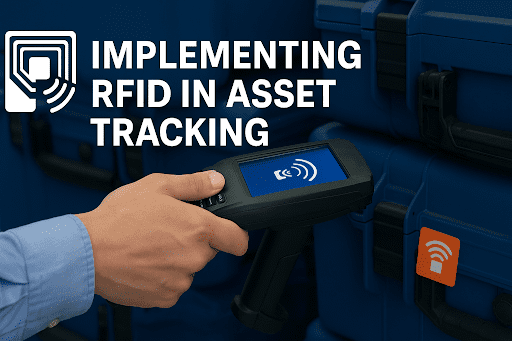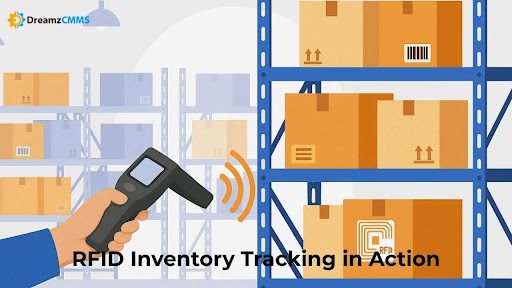 BACK TO Blog
BACK TO Blog
Asset Rental Management
RFID Asset Tracking
What Is an RFID Inventory System? RFID is not new. But the way it is used today is changing how companies manage inventory. An RFID inventory system helps track items without scanning each one manually. Tags go on the items. Readers are placed around the space. When something moves, the
- August 13, 2025
- DreamzCMMS Team
- 8 minutes read

- August 13, 2025
- DreamzCMMS Team
- 8 minutes read
What Is an RFID Inventory System?
RFID is not new. But the way it is used today is changing how companies manage inventory.
An RFID inventory system helps track items without scanning each one manually. Tags go on the items. Readers are placed around the space. When something moves, the system logs it. Quietly. Instantly.
That is the big shift.
You no longer wait for someone to enter numbers or scan labels. The system does it in the background. The result is cleaner data and fewer questions.
Executives often ask how this compares to barcode systems. With RFID, there is no line-of-sight needed. You do not need someone in front of every box. That means more speed and fewer missed items.
If you are looking for something that gives you a clear view of what is where without extra work this is where automated RFID inventory systems stand out.
At its core, it connects your inventory to real-time visibility. And from there, everything runs smoother.
How an RFID Inventory System Works
An RFID inventory system is a mix of three things: tags, readers, and the software that ties it all together.
Tags carry the item’s details. Some send out a signal on their own. Others only respond when they are near a reader. Readers collect that data and push it to the system. The software matches the signal to the right item and location.
In a warehouse, you might place readers at entry points, storage racks, or packing zones. As items move, the record updates automatically. No scanning. No typing. No chasing paperwork.
That is where RFID inventory tracking systems stand apart. They cut out slow manual steps. They reduce mistakes. They give leaders a live picture of stock without waiting for end-of-day updates.
It is simple tech. But in the right setup, it changes how inventory control works.
Core Components of an RFID Inventory Management System
An RFID setup is only as strong as the parts you choose. Each piece plays a role, and together they create the full system.
Tags come first. They hold the item’s details and are fixed to products, equipment, or containers. Passive tags are the most common low-cost, no battery, long-lasting.
Readers are the next layer. They pick up signals from tags, even if they are not in sight. Fixed readers cover high-traffic areas like loading docks. Handheld ones give teams mobility for spot checks.
Antennas link the readers to the tags. The placement matters. Poor positioning can leave blind spots, while the right setup captures movement with precision.
Software is the brain of the system. It takes the tag data and turns it into usable information stock counts, movement history, and alerts when something is off. This is where you gain the real value of an RFID inventory tracking system.
Some businesses pair RFID with RFID Asset Tracking Software to manage not just items in storage but assets in use. That way, the same system covers availability, location, and usage in one place.
The right mix of these components creates the foundation for accurate, efficient inventory control.
Thinking About RFID for Your Operations?If your team still spends hours counting, checking, and chasing inventory records, you are losing time that could be spent on strategy and growth.With RFID inventory systems, you gain the real-time accuracy and visibility needed to make decisions faster and with confidence. See how DreamzCMMS can combine RFID tracking with asset management, maintenance planning, and reporting in one connected platform. Get in touch now and learn how to bring instant visibility into your supply chain and daily operations. |
Key Benefits for Executive-Level Operations
For an executive, the value of an RFID inventory system is in the control it gives. You see what you have, where it is, and what is moving without chasing updates.
That level of visibility speeds up decisions. You can act on changes in demand right away, not after a weekly report. Orders go out on time. Stock levels stay balanced. Cash is not tied up in things you do not need.
Accuracy improves forecasting, too. Fewer blind spots mean purchase plans are built on facts, not assumptions. That leads to less waste and better use of working capital.
It also frees up your team. Instead of counting, checking, and correcting, they focus on customers and deadlines.
Accountability gets stronger. Every movement is recorded automatically. That reduces disputes, prevents loss, and keeps audits clean.
Some companies link RFID with Asset Maintenance Management Software
to track location, usage, and service needs together. That way, you are not just managing stock, you are keeping operations ready.
For leadership, that mix of speed, accuracy, and visibility is what turns technology into a measurable return.
Use Cases Across Industries
RFID is not tied to one type of business. It works anywhere you need to know where things are.
In retail, it keeps the right products on shelves. Staff can see what is running low without scanning every label.
In manufacturing, it follows parts from storage to the production line. That helps prevent downtime when a critical item goes missing.
In warehousing and logistics, it logs shipments automatically as they move through docks. This means faster handling and fewer errors in counts.
In healthcare, it keeps track of equipment, supplies, and even patient files. That reduces loss and makes sure essential items are ready when needed.
In construction, it often works alongside Asset Rental Management Software to follow tools and machinery between job sites. This keeps returns on time and improves accountability.
How to Choose the Best RFID Inventory System
The best RFID setup is the one that fits how you work, not the one with the longest feature list.
Look at your stock levels, the pace of movement, and where problems keep showing up. If your team is doing too many manual counts, you need something that can handle large updates fast.
Choose the right tags. Passive RFID tags are cheaper and work for most uses. Active tags send a stronger signal over longer distances, but they cost more. Pick what matches your layout.
Decide where readers should go. Fixed readers work best for busy areas like loading bays. Handheld readers give flexibility for spot checks.
The software should be simple to use and give instant updates. If it slows you down, it is the wrong choice.
Some businesses link their RFID system with DreamzCMMS to keep inventory data connected to maintenance schedules and asset tracking. It makes the whole process more streamlined.
Additional Considerations Before You Decide
Changing to an RFID inventory system is not just about adding new hardware. It shifts how work is done every day.
Look at integration first. If you already have tools for purchasing, maintenance, or asset tracking, your RFID should connect with them. One system, one source of truth.
Training matters. The setup may be straightforward, but people still need to know how to tag items, read equipment, and use the software. The easier it is to learn, the faster it works for you.
Think about growth. Your choice should handle more stock, more sites, and more users in the future. Avoid short-term fixes that will need replacing soon.
Plan the budget beyond the first rollout. You will need extra tags, more readers, and upgrades over time. If you account for it early, it will not slow you down later.
Some teams use RFID Asset Tracking Software to connect location data with operations. That turns tracking into action helping you decide, not just record.
Conclusion
An RFID inventory system is more than a tracking tool. It is a shift toward real-time visibility, faster decisions, and better use of resources.
For leaders, it brings clarity. You know where stock is, how it moves, and when action is needed without waiting for reports.
The benefits reach beyond operations. They touch finance, compliance, and customer satisfaction. Every part of the chain runs with fewer errors and less waste.
Paired with the right platforms, such as DreamzCMMS, RFID becomes part of a bigger strategy, one that connects assets, maintenance, and inventory in a single view.
Making the change now positions your business for stronger control, smarter forecasting, and measurable returns in the years ahead.
Additional ReadsIf you found this guide valuable, you may also want to explore these topics that complement RFID inventory systems and their role in operational excellence:
These resources can help you align technology investments with long-term business goals while strengthening operational control. |
Take the Next StepYour business cannot afford to work with outdated inventory processes. RFID technology delivers the visibility, accuracy, and speed that decision-makers need to stay ahead.Whether you manage retail shelves, manufacturing lines, warehouses, or complex project sites, the right system will transform how you track, plan, and control resources. Let us show you how DreamzCMMS can integrate RFID into a complete asset and inventory management solution so you get one platform for tracking, maintenance, and reporting. Book a demo today to explore a solution tailored to your operations. The sooner you start, the sooner you see results. |
Ready for More?
Talk to one of our CMMS experts and see how DreamzCMMS can simplify your maintenance operations.
Book a free consultation
